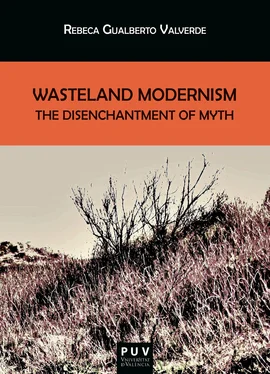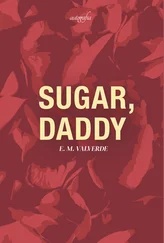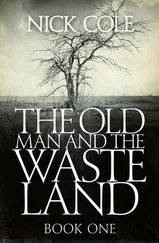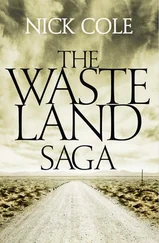12 Shackleton meant to traverse the Antarctic by foot but his ship, the Endurance , was trapped in the ice before he could reach the continent. After months drifting on the ice, Shackleton and the rest of the crew sailed to the inhospitable Elephant Island on lifeboats, and from there risked an open-boat journey to the remarkably distant South Georgia. There Shackleton and his men attempted a harrowing land crossing of the island, concluding a survival adventure which was recreated in the travel narrative South as the epitome of epic achievement. Yet it is the epic story of a failure, for the fact is that Shackleton’s great imperial Trans-Antarctic expedition was an epic journey that he could not even begin.
13 The Hanged Man is actually the card that Madame Sosotris does not see: “I do not find / The Hanged Man” (54-5), but insofar as this card represents Frazer‘s sacrificial god-king, the Tarot character is present in the pack, for some characters that appear in these cards, such as the Phoenician sailor, are in fact Fisher-King figures.
14 Brooker and Bentley explain this phenomenon very eloquently: “From the first perspective, sortilege is meaningless; from the second, it is so charged with meaning that very little of it can be understood. The reader is left with two coexisting problems of knowledge: too little of it and too much. A binary perception yields two kinds of defeated perception, but a level that joins them yields an aesthetically fascinating blend of significant meaninglessness and meaningful insignificance (80).
15 Manganaro argues that, while myth is “by definition narrative,” the use the mythical method in Eliot’s poem disregards narrative to favor instead the methodology of anthropologists and social scientists of the time, who used myth as a structuring device that juxtaposed stories, rituals and actual myths of both ancient and modern peoples (81).
16 Eliot specifies that the Phoenician Sailor reminds him of Ferdinand (23), but both the quotation from Ariel’s song and Phlebas’s death by drowning identify him as counterpart of Alonso, King of Naples. Phleblas, then, stands simultaneously for Ferdinand and Alonso, who become cognate with the Maimed King of mythology in “The Fire Sermon.” Here the reader finds the Fisher King “on a winter evening round behind the gashouse / Musing upon the king my brother’s wreck / And on the king my father’s death before him” ( TWL 190-192). The multiple system of references to The Tempest is complicated further, as the speaker is identified with Ferdinand speaking of “the king my father’s death” and with Antonio, musing about “the king my brother’s wreck.” This new identification of the Fisher King with Antonio, made evident by how the line transforms Shakespeare’s original, “Weeping again the King my father ’s wrack” (Eliot TWL , 192n), characterizes him and his brother Prospero as Maimed King figures indistinguishable from Alonso and Ferdinand. All royals from The Tempest are thus represented in Eliot’s poem as Fisher-King figures, which in a very convoluted way illustrates the multiplication of Fisher Kings throughout the poem.
17 In the context of the poem, the Phoenician sailor is identified with the old Phoenician god Adonis. Effigies of this god were thrown to the seas during the celebration of fertility rites in Ancient Greece (Weston 47).
18 Sarah Cole also notes that Smyrna is a reputed birthplace of Homer (70), which infuses the place with mythical energy.
19 Badenhausen has claimed that “Death by water” may then be read as “a corrupted elegy, an elegy gone bad” that cautions the audience—like Madame Sosostris’ divination—rather offering any sort of consolation (152).
20 “The rituals Frazer associates with Adonis and other analogous god figures (…) are tales not only of cyclical death and rebirth but, more concisely, of murder (…) Weston, like Frazer, emphasizes the bodily quality of the injured king, the blood from his wound leaking into the ground, and the way the structure of the Grail enacts and makes symbolic the often harsh, physical features of the ancient vegetative myths” (47-48).
21 As Eliot explains in his notes (22), the crowd of ghosts is described with two references to Dante’s Divine Comedy . The first—“I had not thought death had undone so many” (Eliot TWL 62)—refers to those awaiting judgement at the Gates of Hell. The second—“sighs, short and infrequent, were exhaled (63)”—describes those who died without baptism and are condemned to spend eternity in Limbo. Significantly, in a world in which the mysticism of water has been transformed into an admonition for catastrophe, to live in the Waste Land means to linger in Limbo, as the redemptive energy of the ritual of baptism has also been eradicated in the contemporary world.
22 Armin Paul Frank (48) and McNelly Kearns (217, 228) have argued for an onomatopoeic interpretation of the last like. For Brooks, the main function of the use of Sanskrit in the poem was onomatopoeic as well (203).
23 Written in Latin and Greek, the epigraph of the poem alludes to Petronius‘s Satyricon : “For I once saw with my own eyes the Cumean Sibyl hanging in a jar, and when the boys asked her, ‘Sybil, what do you want’ she answered, ‘I want to die’ (North, TWL 3, n1). The Sibyl asked Apollo to grant her as many years to live as there are grains in a handful of sand. She forgot however to ask for eternal youth, and thus she languishes in a state of perpetual degeneration that makes her long for death.
Конец ознакомительного фрагмента.
Текст предоставлен ООО «ЛитРес».
Прочитайте эту книгу целиком, купив полную легальную версию на ЛитРес.
Безопасно оплатить книгу можно банковской картой Visa, MasterCard, Maestro, со счета мобильного телефона, с платежного терминала, в салоне МТС или Связной, через PayPal, WebMoney, Яндекс.Деньги, QIWI Кошелек, бонусными картами или другим удобным Вам способом.












